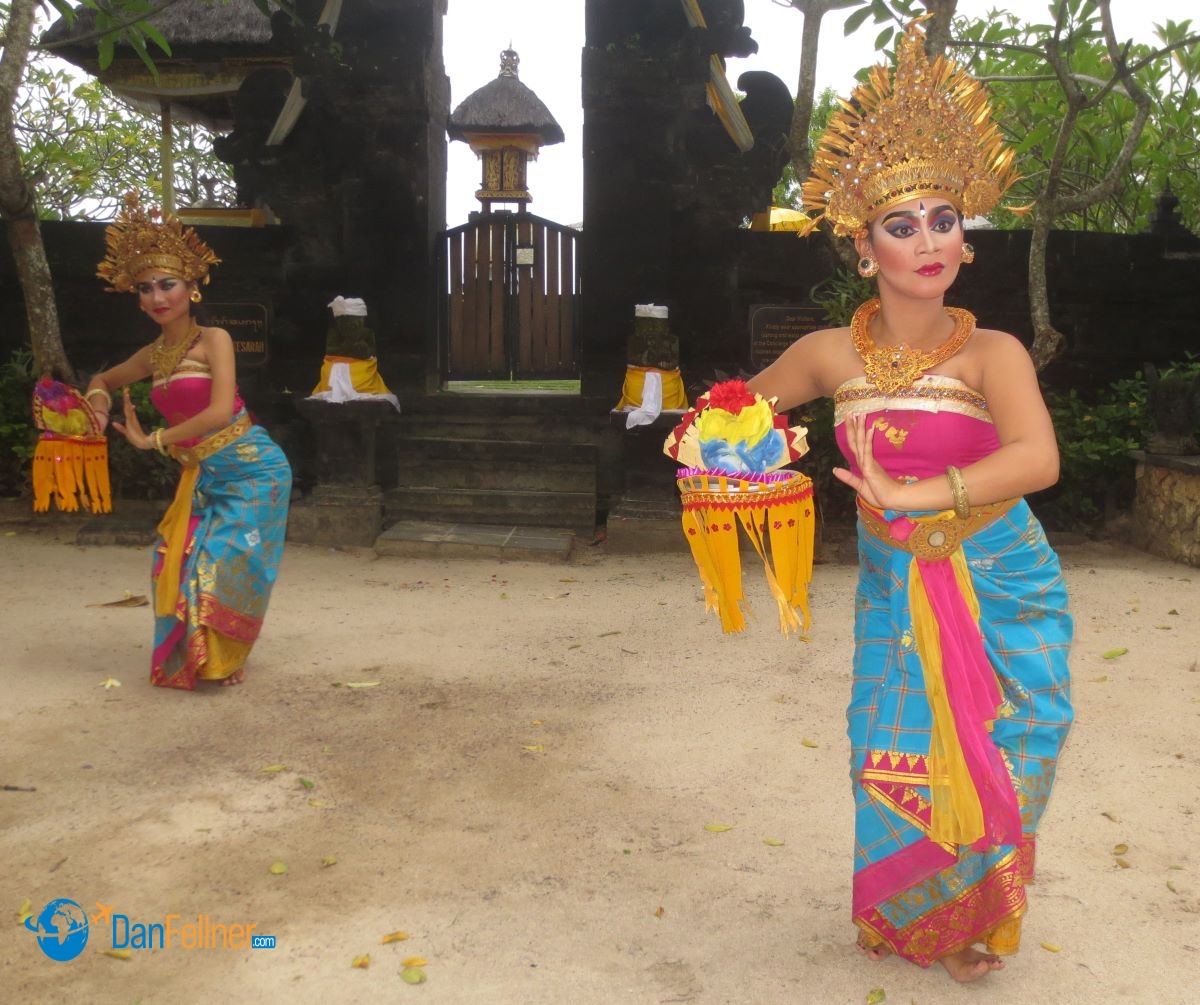Traditional dance reflects Indonesian island’s unique and devout culture
The Arizona Republic — February 26, 2017
JIMBARAN BAY, Bali – Ask a local here about the island’s population (about 4 million), and they will most likely answer in terms of “souls” rather than people.

One of the most scenic Hindu temples in Bali, Puri Ulun Danu Bratan is on the shores of Lake Bratan.
It reflects the deep spirituality of Bali, where there are Hindu temples on virtually every street, shrines in most homes and businesses, and where many Balinese present offerings of flowers and candy to the Gods each day before going to work.
Yes, Bali offers beautiful beaches, high-end resorts, world-class surfing and spectacular sunsets that are found on many tropical islands. But what sets it apart from other warm-weather destinations is the devoutness of its unique culture, which permeates all aspects of Balinese life and envelopes tourists as soon as they arrive.

Bali has a population of about 4 million, 80 percent of whom identify as Hindus.
Appropriately known as “Island of the Gods,” Bali is one of more than 17,000 islands in the Indonesian archipelago and – by far – the country’s most popular tourist destination. Its 2,200 square miles – full of rice paddies, volcanic mountains and traffic-clogged cities — make it approximately the same size as the state of Delaware.
While Indonesia’s population has a Muslem majority, Bali is a pocket of Hinduism; more than 80 percent of the island’s population identify as Hindus. The Balinese speak their own language, although most also are fluent in Indonesian. English isn’t widely spoken beyond tourist areas.

A Hindu funeral at Pura Ulun Danu Batur Temple in Bali. More than 80 percent of the island’s population identify as Hindus.
Regardless of the occasional difficulty in communicating, I found the Balinese to be welcoming, quick with a smile, and rightfully proud to show off their island. Even mispronouncing the Balinese word for thank you – suksma – which I did repeatedly, would bring a cheerful grin (it’s pronounced sook-sum-uh).
I was especially fascinated by the beauty and elegance of traditional Balinese dancing, which isn’t only considered an art form, but an inseparable part of the Hindu faith.

A Balinese teenager demonstrates the finger contortions and intense facial expressions of traditional Balinese dancing.
My first exposure to local dancers came at an interactive class at the Ganesha Cultural Center in Jimbaran Bay in the southern part of Bali. Located inside the grounds of the posh Four Seasons Resort, Ganesha (named after a Hindu god) also is open to visitors not staying at the hotel. It was inaugurated last summer to showcase the work of local hand-picked artists and preserve Balinese culture.
At the Ganesha dance class, two 15-year-old girls from the local village demonstrated some of the techniques that make Balinese dancing so compelling – intense facial expressions, rhythmic head-bobbing and fluid hand movements. There are other traditional dances around the world – the Ukrainian hopak comes to mind – that may be more acrobatic, but few are as pleasingly graceful and exquisite.
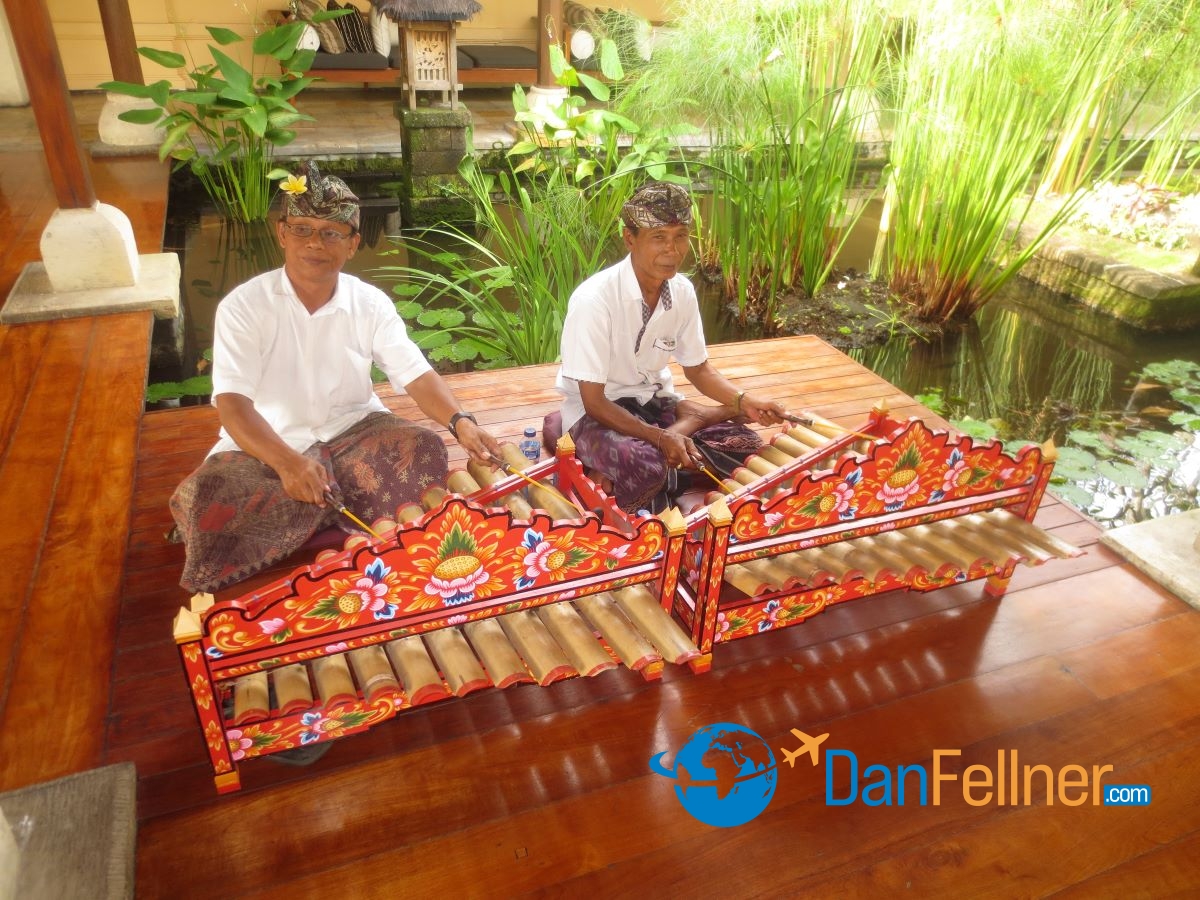
Balinese musicians play a traditional instrument made from bamboo called the rindik at the Four Seasons Jimbaran Bay.
That’s not to say, though, that being agile and dexterous isn’t an asset. In addition to mastering some pretty tricky head and foot movements, Balinese dancers can contort their fingers in a way that makes Mr. Spock’s Vulcan salute seem pedestrian.
“It’s all about practice,” said Ni Luh Gede Suryatini, assistant manager of the Ganesha Cultural Center. “You need to start learning from a very young age.”
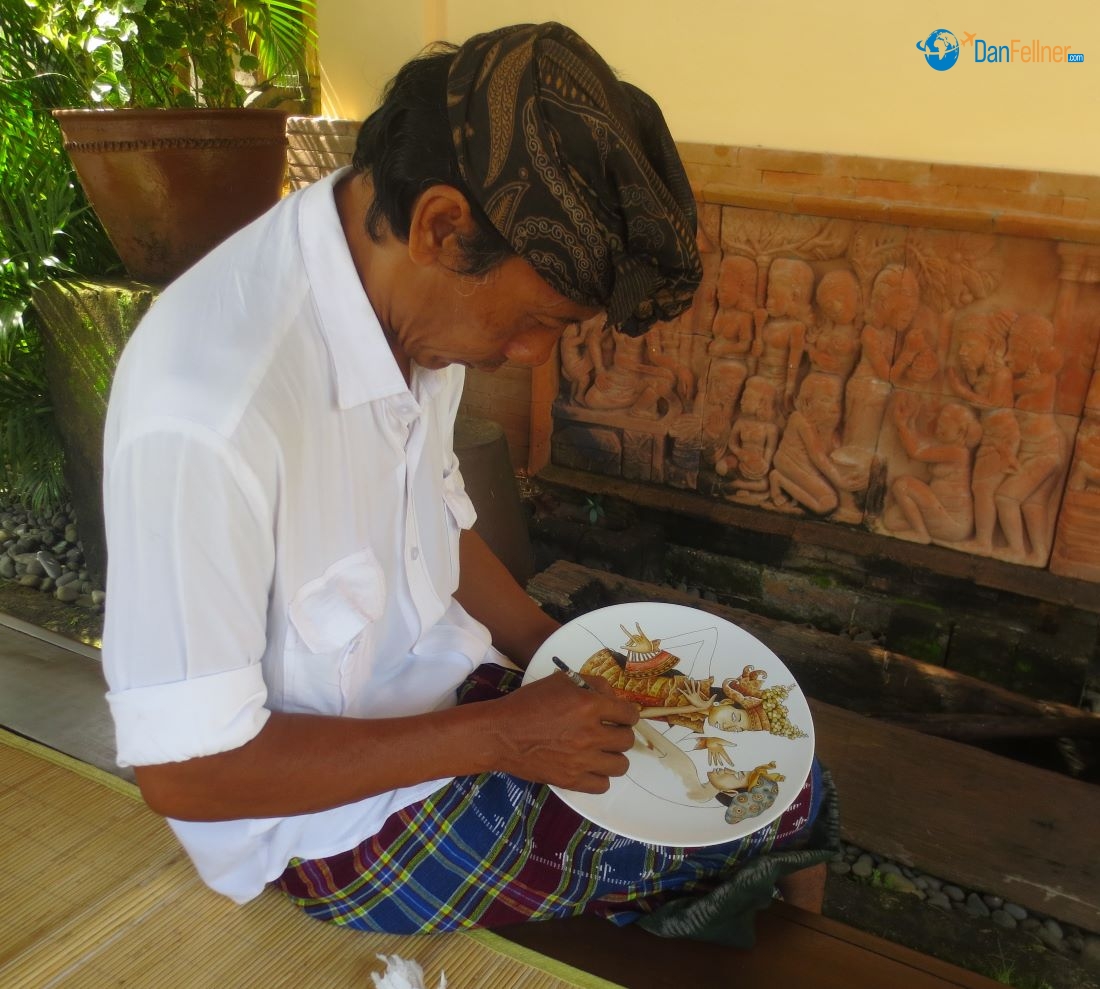
A Balinese artist works on a ceramic painting at the Ganesha Cultural Center.
Some Balinese dances are like watching a play with a plotline. When the plot calls for it, facial expressions can involve eye-bulging and scary snarls. Other dances – based on humorous stories — can veer toward slapstick.
“We have dances about war, we have dances about love, we have dances about how to welcome our guests,” said Suryatini. “That determines the expressions of our dancers.”

A Balinese priest presents an offering to Hindu Gods in a ceremony at the Hindu temple at the Four Seasons Jimbaran Bay.
That evening, I was treated to a dance performance in the courtyard of the Four Seasons’ onsite Hindu temple, which has its own resident pemangku, a Balinese priest who blesses visitors and demonstrates Hindu rituals.
Backed by an eight-piece, percussion-heavy band playing traditional Balinese instruments, a group called Teba Banjar from Jimbaran village performed five classical dances in brightly-colored costumes and intricate gold headdresses (see video shot by the author at Four Seasons Jimbaran Bay: Balinese dancing at Jimbaran Bay).
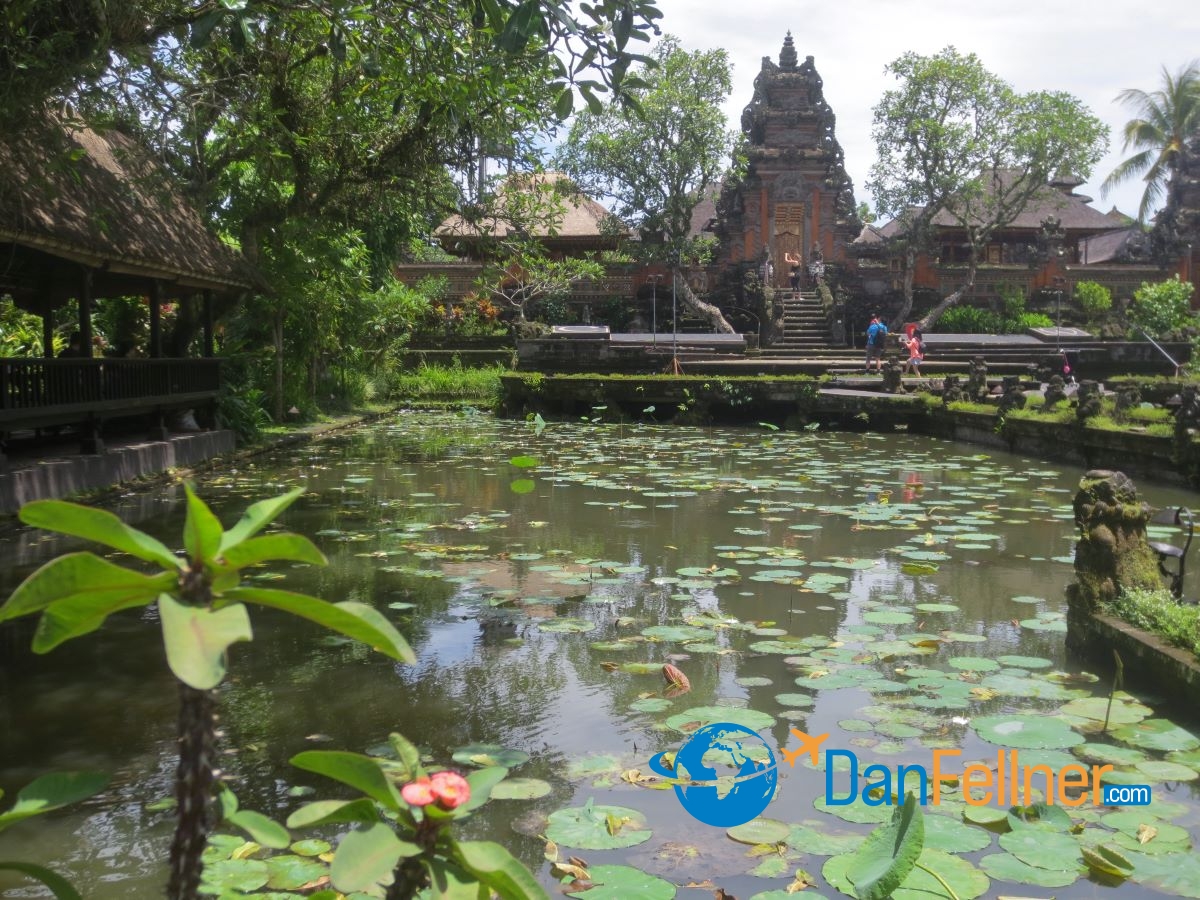
A Hindu temple in Ubud, a town in central Bali that is considered the spiritual and cultural center of the island.
The Ganesha Cultural Center offers classes in other traditional Balinese art forms, including woodcarving, ceramic painting and hand-weaving. There’s also a class on how to make a canang, a small palm-leaf basket used by Balinese to present daily offerings – such as candy, coins and flowers — to the gods. The Four Seasons donates all proceeds from the cultural center back to the local artists.
I also took a daytrip to Ubud, a town in central Bali that is considered the spiritual and cultural center of the island. Full of art galleries, spiritual healers and meditation centers, it’s vibe is somewhat evocative of Sedona. There’s even a popular spa in Ubud named Sedona. A portion of the 2010 movie “Eat Pray Love,” which chronicled writer Elizabeth Gilbert’s quest for inner peace and starred Julia Roberts, was filmed in Ubud.

Balinese celebrate the Hindu Festival of Colors — known as Holi — at a park in Denpasar.
There are no direct flights to Bali from the United States, but there are easy connections from major Asian hubs like Hong Kong, Tokyo and Singapore into Denpasar, Bali’s largest city. Balinese food is flavorful, spicy and reasonably priced. Unlike in India, which practices a different strain of Hinduism, beef is on the menu in many Bali restaurants.
When Bali first began attracting significant numbers of tourists in the 1930s, Indonesia was a Dutch colony. Many visitors came to experience a culture with a diverse mixture of Chinese, Polynesian, Indian and European roots that was unlike any other in the world.

Sunset over Jimbaran Bay in southern Bali.
Nearly a century later, more than 3 million tourists visit Bali each year. The hotels now are far ritzier and the traffic is in a seemingly perpetual state of gridlock. But the tourists still come for the same reasons. That’s why Suryatini said it’s vital that the culture is preserved through dance and art.
“We know the tourists are coming to Bali because of its culture” says Suryatini. “If we don’t save this culture from now on, who will do it?”
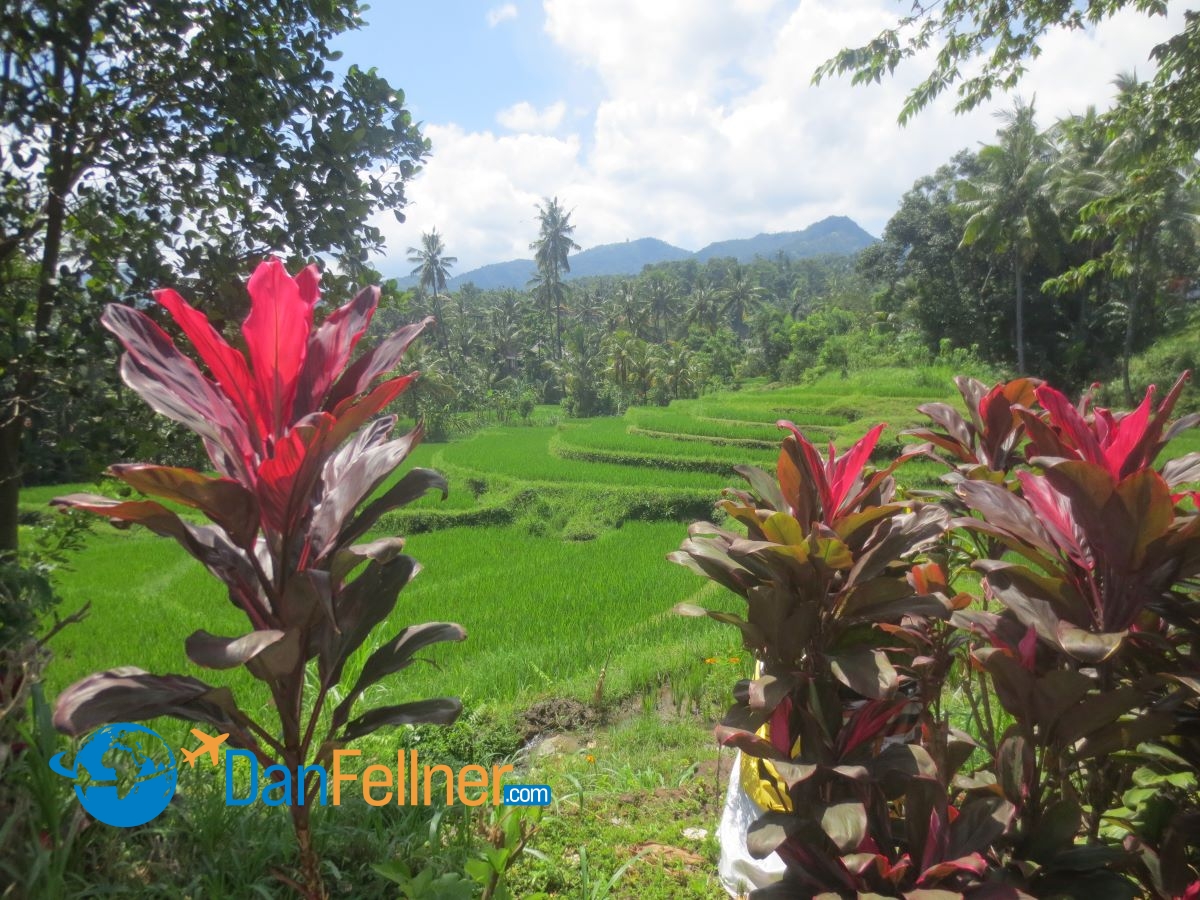
The Balinese countryside.
© 2017 Dan Fellner

